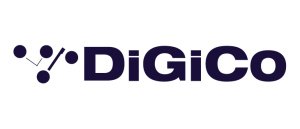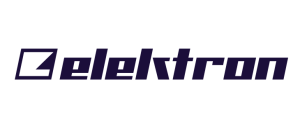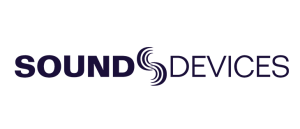With over 50 international dates on the horizon in support of her latest outing Girl on Fire, Grammy award winning artist Alicia Keys has surrounded herself with an adept team of engineers with support from Clair Global and DiGiCo mixing systems. With a total of five SD racks (two for FOH, two for monitors, and one for opening artist, Miguel), they’re also carrying a pair of SD10s (one at FOH and monitor world) to handle the eight-member band including the headliner. Newly positioned at FOH is Tim Colvard, who took over the European leg of the tour. Although Colvard’s employed DiGiCo consoles for many of his clients international tours, this was his first time on an SD10 (as well as his debut outing with both the artist and with Clair Global). He joins Clair FOH tech Randy Weinholtz and monitor mixmaster Antonio Luna for the already-in- progress global tour.

Tim Colvard FOH for Alicia Keys with a DiGiCo SD10
The challenge of a one-day rehearsal prior to his first live show could’ve been cause for a bit of nail-biting. However, Colvard’s extensive previous hands-on experience on an SD7 with Madonna, Usher and others lent itself to getting up and running quickly on the new console and Keys’ eight-piece outfit, comprised of keys, bass, drums, guitar, and a trio of background singers.
“A phone conversation with Alicia convinced me that she really cares about her sound,” says Colvard. “And being intrigued by her music made joining an already-in-progress tour an easy decision. With Alicia having one of the most powerful and dynamic voices in the industry, DiGiCo’s dynamic EQ really came in handy for smoothing everything out, especially when she’s really belting it out in the high-end. Also, I’m maximizing all of the dynamic compression available on the SD10 for all of the Pro Tools channels.
“It is also important for me to use snapshots, which I time to run consecutively. This allows me to do certain mutes on the piano, particularly when it goes down the lift in the middle of the song and gets disconnected, as well as for other microphones in different parts at the stage. Using these features gives me more time to mix instead of trying to remember what inputs should be muted or un-muted.”
Colvard’s also carrying a rack of external effects which gives him “a variety to cover most algorithms needed to do duplicate the album effects.”
“We love the flexibility of the SD10 desk,” adds Weinholtz. “The dynamic EQ is really nice and having the ability to create a fader bank of multiple input/outputs, and whatever your brain can think of, is great.”
But perhaps the most interesting aspect of the tour’s audio specs is Antonio Luna’s employment of an Aviom personal monitor mixing system—typically found in House of Worship, theatre and studio settings primarily, but not so much in touring. Luna’s using this in tandem with his SD10 to allow the band to customize and control their own individualized monitoring needs.

Tony Luna on Monitors for Alicia Keys with a DiGiCo SD10
“The Aviom has been pretty cool,” he says. “I didn’t think I’d ever use it again after Aerosmith in 2009 but the musical director wanted to and so we figured out a way to incorporate it and it’s been working well since day one. I’m able to send 16 sends to the primary band members, who are all able to mix themselves, which means I get left alone to mix the three background vocalists and the singer. The band doesn’t ask me for anything during the show, so I can concentrate 100% on the artist. I would assume there are other engineers out there using Aviom, although I just don’t know anyone off-hand who’s doing it. It’s definitely made my job easier and I’m still able to deliver quality mixes to the band via that source. The band seems really happy with it, and if they’re happy I’m happy.”
Concentrating on Alicia, Luna keeps the effects to a minimum, relying mostly on the internal effects, with the exception of a TC Electronics M4000 plug-in via AES at 96kHz. “That reverb sounds really good on her vocal and we really like it. But everything else I’m using with her is internal. I find I use a lot of compression on her vocals. She has a lot of dynamic range, so I need to take that down a little bit to make it fit when she’s singing loud or soft. Because she’s primarily a piano player, the mix is very important. The piano can easily get lost or washed out if you have too much vocal or too much ambient sound. So the vocal and piano are the important parts of the mix, and the rest follows those two key elements. I make sure I can always hear the vocal and the piano, and if I can always hear the vocal and the piano, with the band fitting in nicely underneath, we’re going to have a great day!”
They’re also tracking 80 inputs on Nuendo at monitor world and FOH and 80 channels of Pro Tools to split off the stage racks.
The SD-Rack presents a world of I\O options including AVIOM
Another technological advance on the tour is the use of a Signal Hound RF Spectrum Analyzer. “When we were deciding the gear spec, Scott Evans introduced me to the product and we decided to get one for the tour,” says Luna. “We’re getting really good results and the manufacturer has been fantastic. They’re excited for the feedback because apparently no one in our industry is using it, so it’s kinda cool to be breaking new ground like that.”
Both the artist and management have been happy with the production, both onstage and off…. And are verbal about it. “We’re getting a lot of compliments,” Luna offers, “and a couple of shows ago Alicia said it sounded wonderful at soundcheck… I’m not used to getting that kind of positive feedback from artists, so it’s refreshing, especially coming from Alicia, because she’s such an awesome talent.
“Other than that I’m really grateful that I’ve got a good relationship with the vendors, not just with sound company, Clair Global, but with DiGiCo as well,” continues Luna. “It’s a killer combination for service. I feel confident that no matter where I am in the world, if I need something, it’s going to happen. Thanks to both Clair and DiGiCo for helping me out on this tour… it’s very been appreciated.”
“In today’s touring industry where cost of gear and truck and rack space are ongoing issues,” adds Colvard, “it’s important to have a console that can solve many of these challenges, the DiGiCo SD10 meets all of the needs for getting on the road—from the sonics of the sound to the dynamic EQ, dynamic multi-band compression overdrive [DiGiTubes] and delay on channels, to its great gates and ducking capabilities. Having these tools makes the selection of DiGiCo consoles live an easy choice for me.”
Colvard Photo Credit: Kathy Beer












































